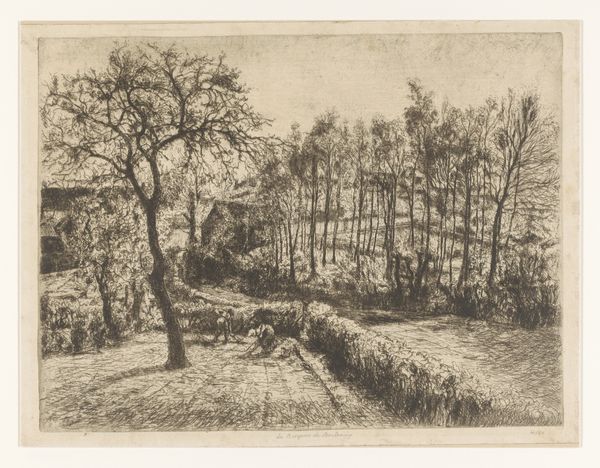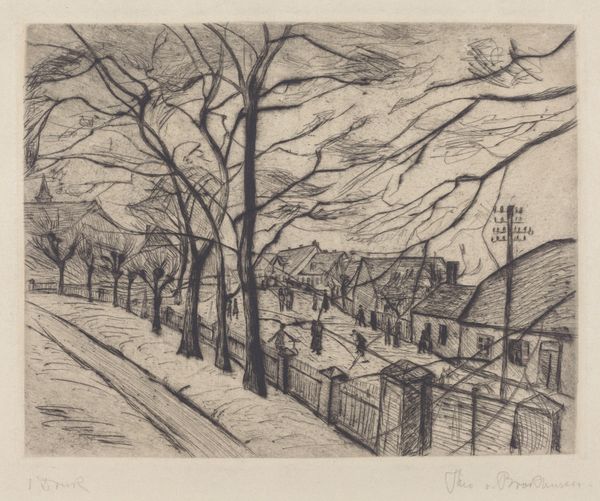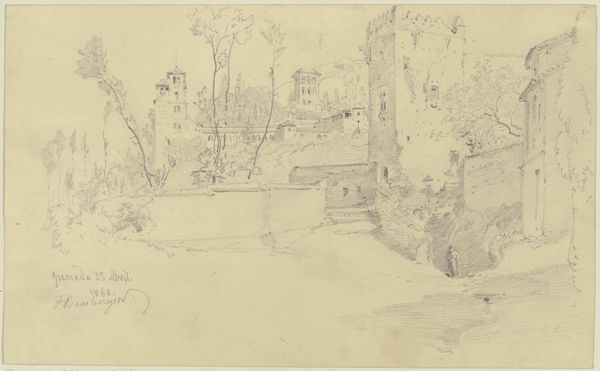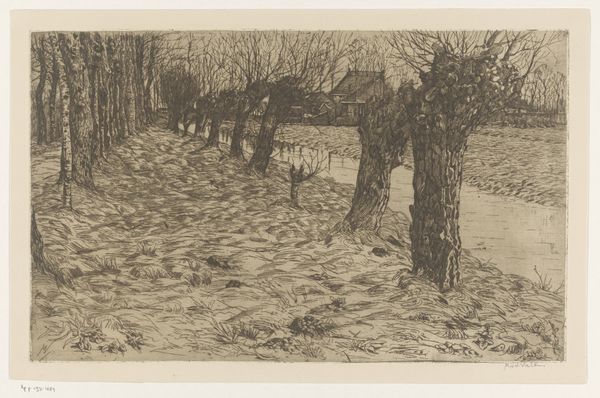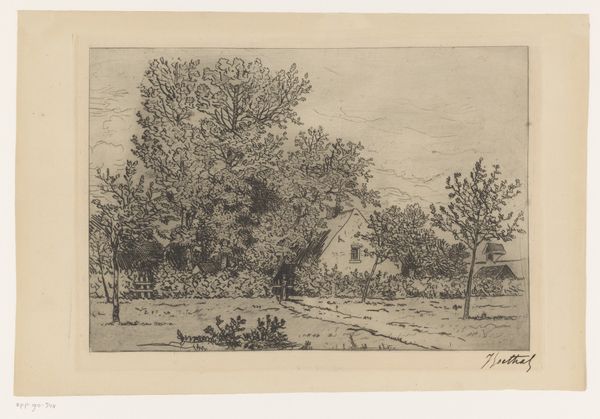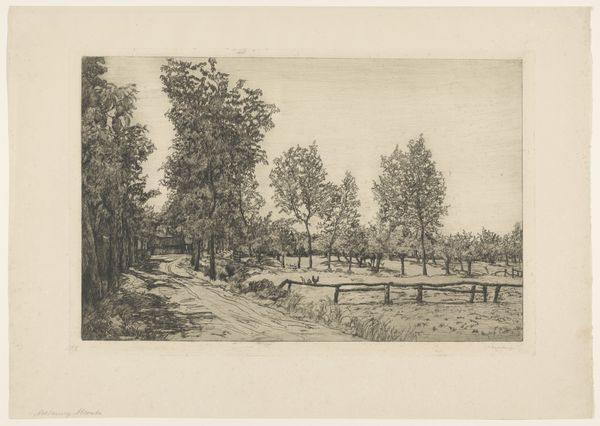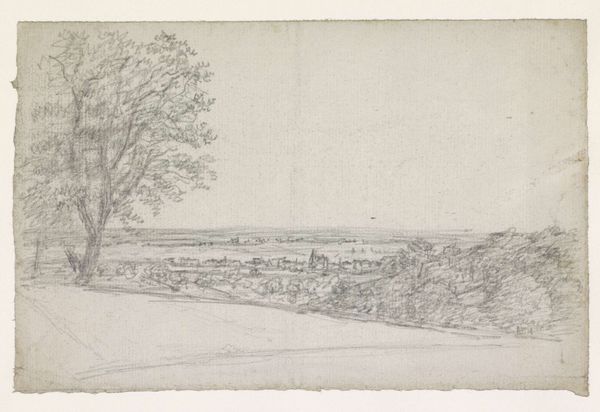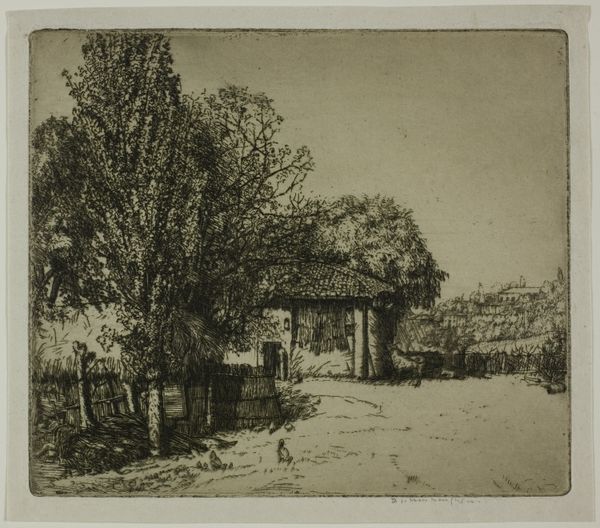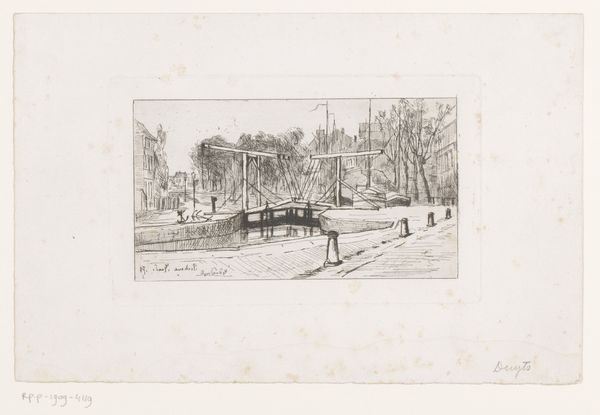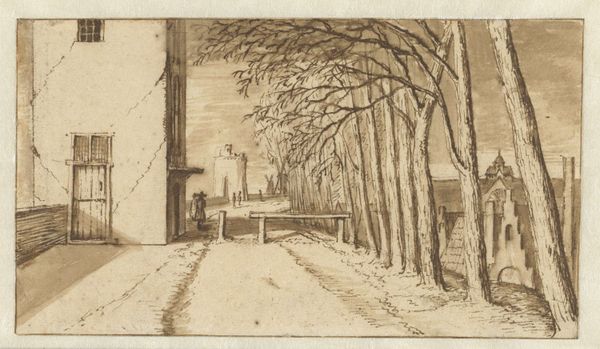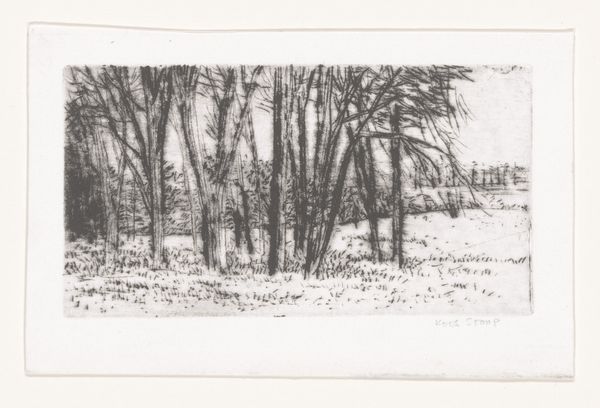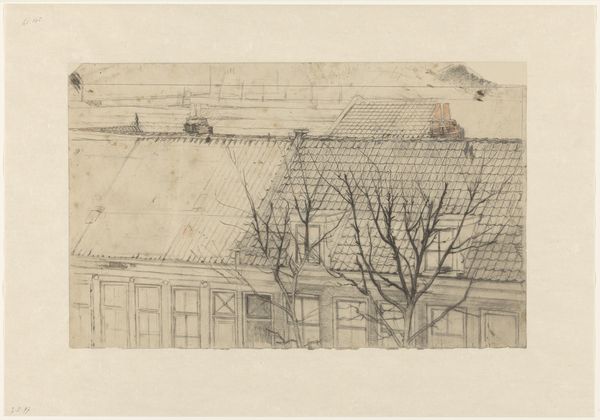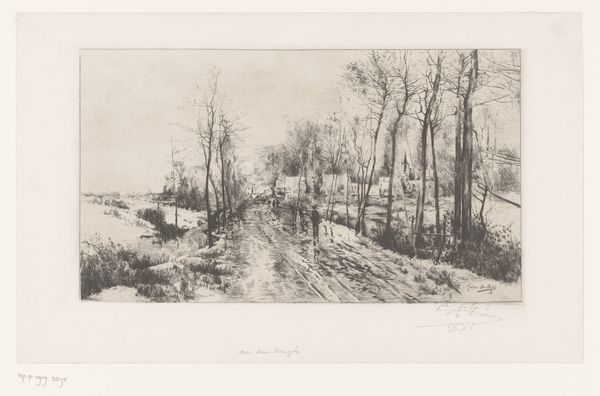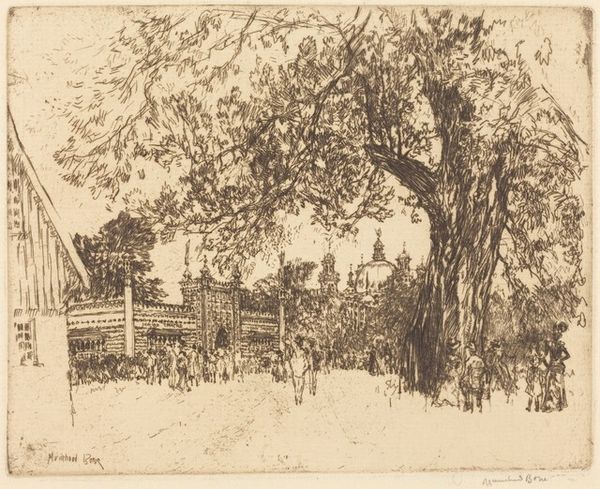
Dimensions: height 498 mm, width 646 mm
Copyright: Rijks Museum: Open Domain
Curator: Here we have Barbara Elisabeth van Houten's "Gezicht uit mijn atelier," or "View from my Studio," an etching created in 1905. It's printed on paper and renders a cityscape through a thicket of trees. What are your initial impressions? Editor: Stark. Bleak, almost. The bare trees and the stark contrast of light and shadow give it a melancholic, perhaps even desolate feeling. It speaks to the quiet solitude of urban spaces when stripped of their summer foliage. Curator: That's interesting. Van Houten was working within an Impressionist tradition, but using etching, a medium demanding careful labor. This process allows her to capture intricate details. The labor embedded in the artwork, especially in this style of dense layering, adds an interesting texture that challenges the easy notions of Impressionism. Editor: Right. Etching allowed for broader distribution, too, making art more accessible. How might the politics of landscape change when images can reach wider audiences beyond private collections and galleries? And who held access to education, resources and power within the artworld at this time? These are important to ask. Curator: Well, consider the act of choosing the view "from my studio." It domesticates the landscape, bringing it inside. I'm drawn to the craftsmanship displayed in the details of the trees, almost as if they are crafted commodities. Editor: The view isn’t politically neutral either; Whose view matters and is platformed within urbanism shapes who the city caters to. The composition frames a specific view of a garden, likely for someone in the upper class; whose labor created and maintained it? What lives were affected to build that world? Curator: So you're suggesting that the work indirectly addresses the conditions of labour in this particular societal view? Editor: Exactly. When viewed from the right angle, this print doesn’t merely replicate a reality; rather it is embedded with historical implications concerning power and socioeconomic structure. Curator: This focus helps me appreciate her conscious choices concerning form and materials in visualizing society. Editor: Understanding the work’s sociopolitical impact will push for an awareness of the communities both enabled and limited to access resources to the studio itself.
Comments
No comments
Be the first to comment and join the conversation on the ultimate creative platform.
